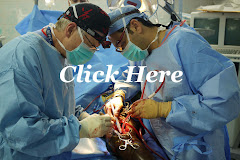I can attest to the ingenuity of this system as I have used it in both Haiti and Malawi with success. It is reliable, effective, safe, and most important...cheap! This article was written by the originator of the CURE Drill System, Dr Scott Nelson, and was originally posted on the CURE Caribe blog.
This drill system was designed out of the need for a safe and sterile low cost solution for an orthopaedic power system in the developing world. Many local surgeons in this environment are using overpowered hardware store type drills that are used with marginal sterile technique and because they often function at over 2000 revolutions per minute, tissue necrosis is created with a host of secondary ill effects.
While the demonstrated system can be created by any adventurous orthopaedic surgeon, considerable effort has gone into researching the appropriate model drill, removing the commercial chuck to allow use of the stainless steel surgical chuck, and creating a cover that is safe and functional.
The components consist of the 9.6v DeWalt cordless drill which is a variable speed drill that has two different gears. The low gear is appropriate for reaming and power driving screws and fixator pins while the high gear is best for drilling. Of all the consumer drills researched the specifications and weight of the DeWalt 9.6v drill most closely matches that of the available orthopaedic surgical drills (for a fraction of the cost). This drill is comfortable for hand surgery as well as for performing ORIF and IMR's of the long bones. The 3 1/2" shaft is canulated up to a certain point allowing the surgeon to safely choke up on K wires.
The nonsterile drill is placed into a sterile cover which is carefully closed by a scrubbed member of the surgical team without touching the drill. The sterile surgical chuck is then threaded onto the 3/8" bolt (clockwise) and the cover is closed. The sleeve covers approximately 2" of the shaft proximal to the Jacob's chuck which provides an adequate sterile margin. At the end of the case the surgical chuck and cover are removed, washed, and sterilized in the autoclave. An ideal set up would include at least 2 surgical chucks and several covers in order to do multiple back to back cases.
Sets are available through Jerry Daly at www.lluglobal.org and are sold for the cost of the materials and shipping. Or you can create your own if you have the patience and time to work out the details.











No comments:
Post a Comment